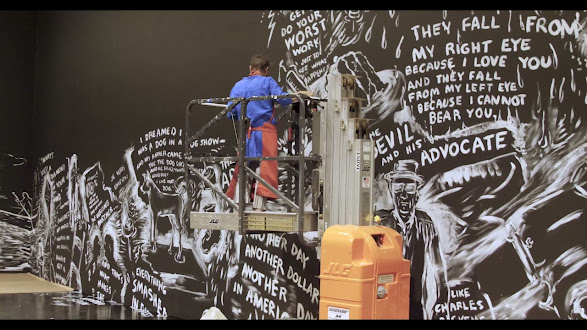Laurie Anderson: Four Talks - Final Analysis
Laurie Anderson: Four Talks - Final Analysis
ARTIST'S INTENTIONS
As what the artist, Laurie Anderson, was trying to do or evoke through this art piece, I believe that her intentions were quite striking. Just like the room and artwork of this room surrounds or even embraces you, Laurie's intentions do as well. The piece itself is a statement, a conversation from the artist, to the viewer, an act of vulnerability. Laurie's intention was to think about, and talk about issues and many topics, alongside every other passing thought and conversation within daily life. The artist's intention is to get our minds racing about the topics she chooses, to get us to ask questions, get us thinking, make us think about the past and the conditions of the present. "What are days for?" it asks, "Who owns the moon?" "Are mountains aware?." She used it to synthesize the many themes she's been circling in her mind for decades, and all the notes of this bizarre song end up unifying to make an interesting symphony.
MEANING
As for meaning, the meaning of this piece stems from the inner workings of both Laurie's, and the viewer's mind. The meaning of this piece is much less of a retrospective of her mind, and much more of a culmination of thoughts and topics deemed significant and important. For this pieces specifically, meaning lies within Anderson's dream and joke logic, it's meaning couples wisdom and humor. It's meaning goes hand in hand with the entire exhibit, "The weather", its a culmination of feelings, ideas, experiences about life, and just as the weather is unpredictable, within this room it's nearly impossible to say when something begins or ends. The words simulate how life goes on, and thoughts whirl around you like wildfire, and the crow and it's jet black color represents death at the end of the road, and how death may not escape one's mind "the room" at times. It seems to make a statement about the world's, and one's mind's oncoming calamity without using any sort of didactic methods, and after all that, like getting lost within the jumbled, garbled walls of the room, one can get lost in the plans, questions, and thoughts of one's own mind, which is the meaning that Laurie Anderson wanted to communicate to the viewers of her exhibit.





Comments
Post a Comment